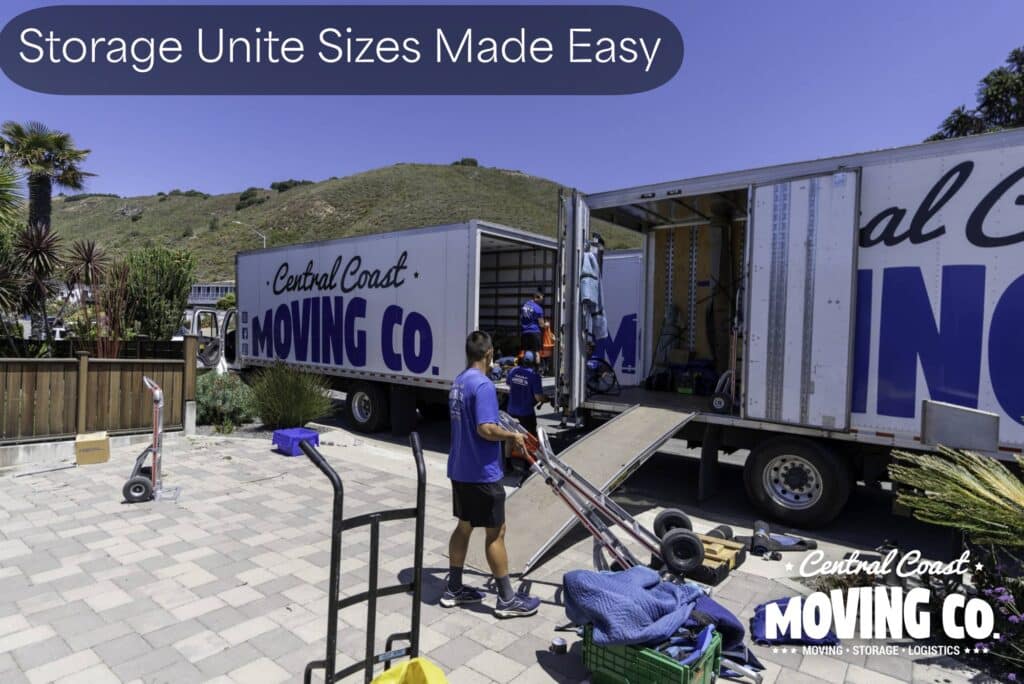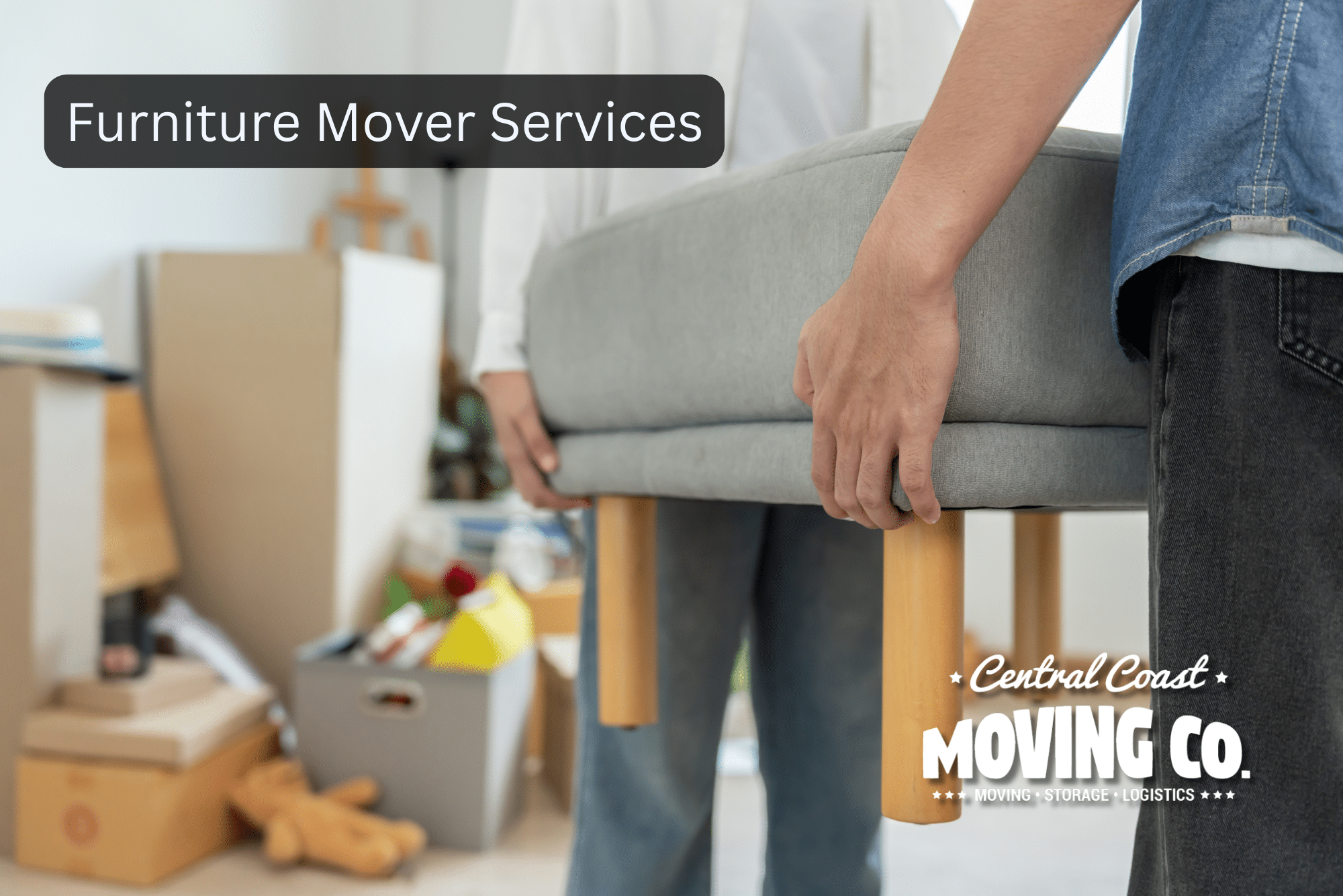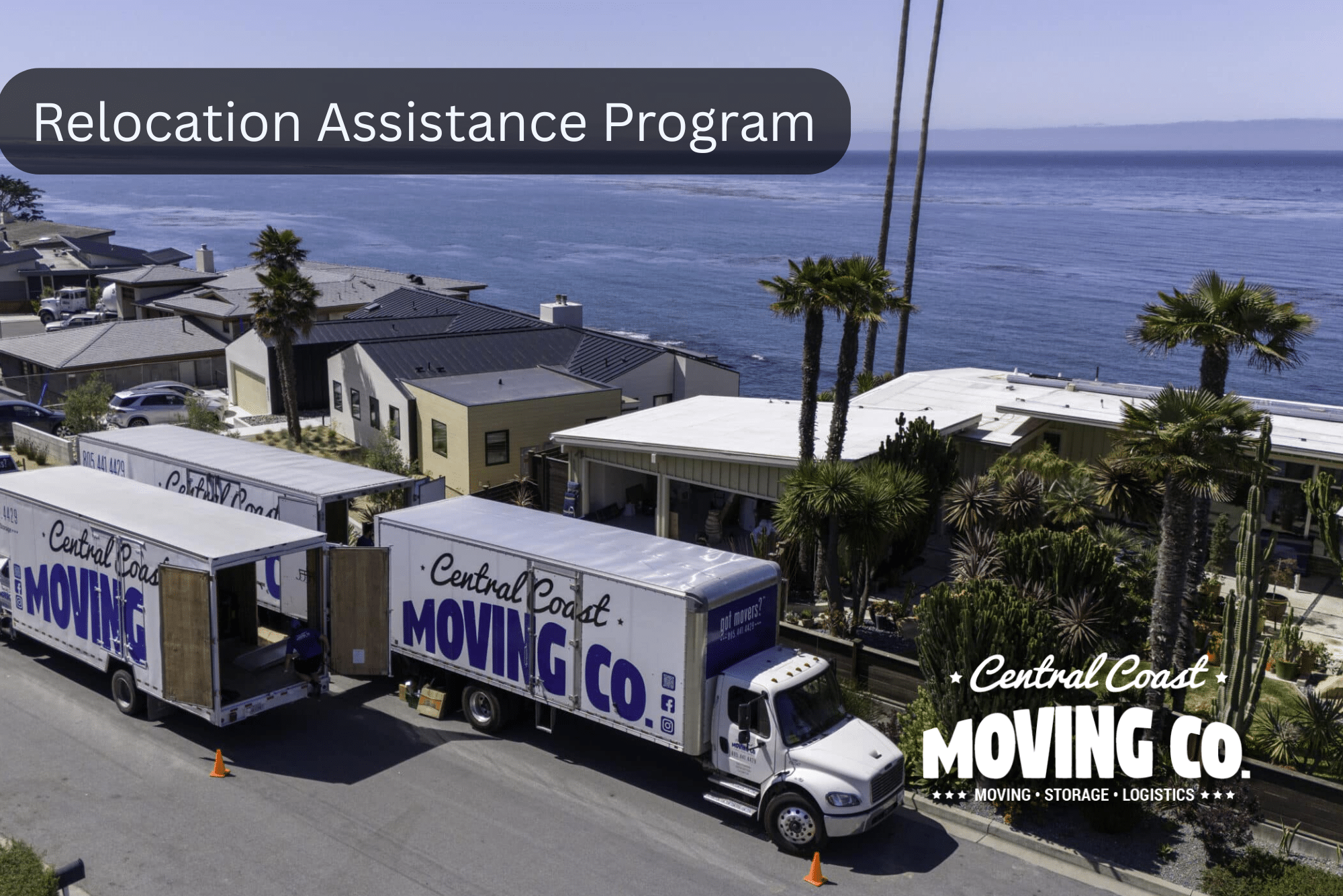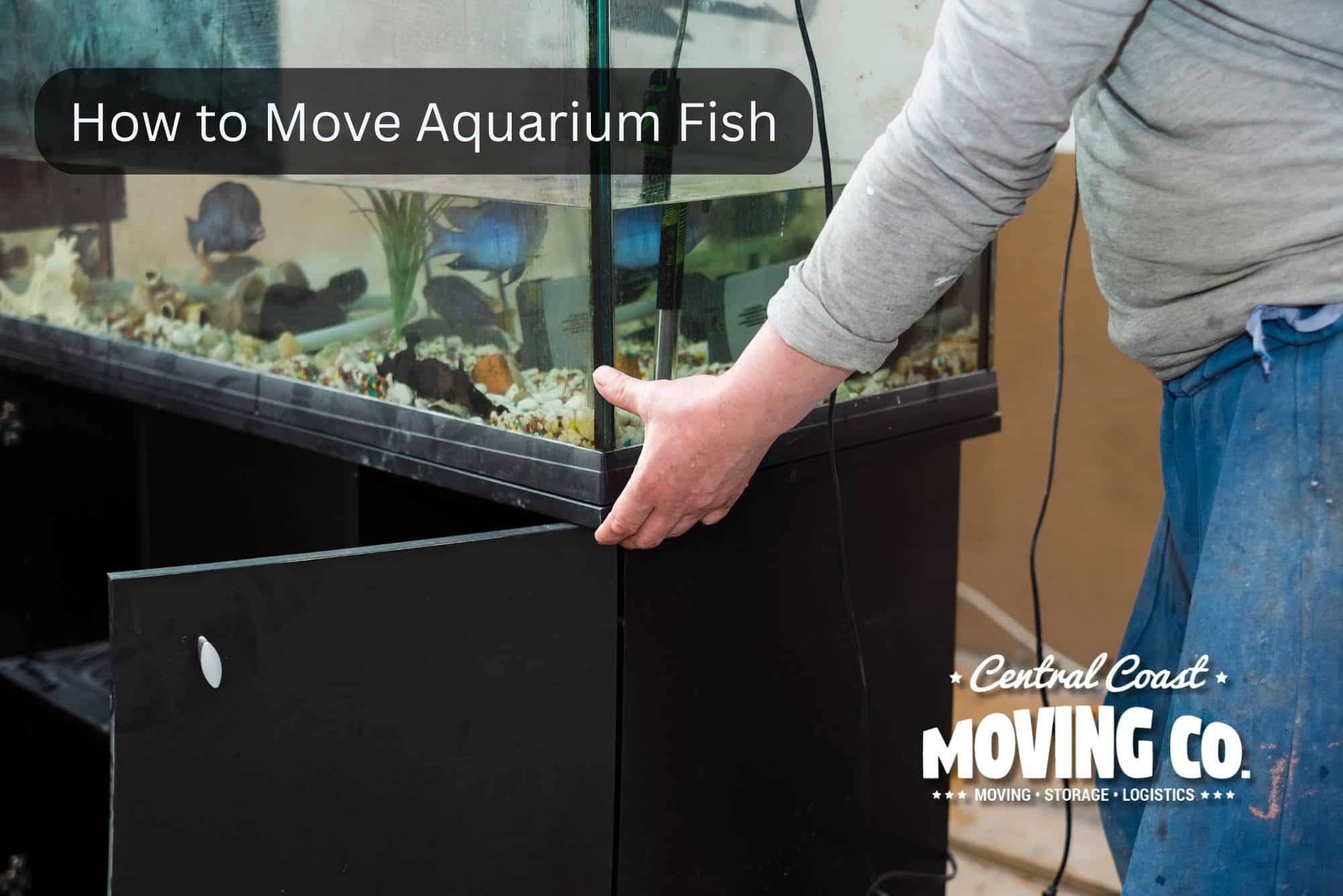Picking the right storage unit size is one of the simplest ways to save money and stress during a move. Many people either rent a unit that is too small and struggle with a tight fit or choose one that is too large and pay for empty space. Independent testing of storage costs shows that the difference between a small unit and a medium unit can exceed one thousand dollars per year, which is a powerful reason to size carefully before you sign a lease.
This guide breaks down common storage unit sizes, shows what fits in each one, and gives you a practical method to decide what you need. You will also find tips to maximize vertical space, answers to the most asked questions, and a short service area section so local readers can plan a smooth move with Central Coast Moving.
If you are looking for moving services in San Luis Obispo, you will find helpful local notes sprinkled in, but the advice applies no matter where you live.
How Storage Unit Sizes Are Measured
Storage sizes usually appear as two numbers, such as 5×5 or 10×20. The first number is the width in feet and the second is the depth in feet. Multiply them to get square footage. Many facilities also describe approximate cubic footage since height adds stacking capacity.
Most standard units are about 8 feet tall, and some properties offer taller ceilings while others provide low height lockers in dense urban buildings. Always check the exact measurements at the facility you plan to use since sizes are approximate and can vary by location.
Storage unit sizes are often listed as ‘5 x 5’, ‘5 x 10′, or ’10 x 15’. These details help customers compare options and visualize which unit—such as a 5 x 5 for a small closet, a 5 x 10 for a walk-in closet, or a 10 x 15 for the contents of a two-bedroom apartment—best fits their needs.
Quick example – A 10×10 unit has about 100 square feet of floor space. With an 8 foot ceiling, that is roughly 800 cubic feet. The notation can appear as ’10 x 10′ or ’10×10’—both refer to the same size. This is why two units with the same floor area can feel different when one has taller ceilings.
Small Storage Units: 4×4, 4×5, 5×5, 5×8, and 5×10
Small units act like a spare closet or compact room for overflow items. Common sizes include 5 x 5 and 5 x 10 storage units, sometimes listed as 5′ x 5′ or 5′ x 10′, making it easy to find the right fit for your needs. They are ideal for students, seasonal storage, or anyone staging a home for sale.
Typical items that fit in these units include boxes, small furniture, and dining chairs.
4×4 storage unit and 4×5 storage unit
These mini storage sizes are perfect for compact needs. Think holiday decor, a few totes of kids’ clothes, sports gear, a nightstand, and a lamp. If you plan to store anything tall, remember to measure the height. Facilities sometimes offer reduced height lockers for this range.
5×5 storage unit
This is the classic closet sized space. It handles small furniture, boxes, and seasonal items. A 5×5 gives about 25 square feet on the floor and around 200 cubic feet if the ceiling is 8 feet tall. That means it can fit a stack of boxes plus a chair, small bookcase, and even a coffee table, but it is not meant for a full room of furniture.
Wondering what does a 5×5 storage look like or how big is a 5 by 5 storage unit? Think of a small walk in closet, and plan your stack from back to front with a narrow aisle. Leading national size guides also describe the 5×5 as a closet sized unit of roughly 25 square feet and about 200 cubic feet of capacity.
You might also see this phrased as storage 5×5, 5 x 5, or even just x 5 on facility pages and comparison sites. The meaning is the same.
5×8 storage unit
A 5×8 adds a bit more depth than a 5×5. It can fit a twin mattress, a small desk, a dresser, and several boxes. For a studio or dorm, this size often provides a comfortable margin.
5×10 storage unit
This size, often listed as ‘5 x 10’ or ‘5×10’, handles the contents of a mid sized bedroom or a modest studio. Many national guides present 5×10 as a small category unit commonly used for one room of furnishings. If you plan to store a bike, a small sofa, a coffee table, and a dozen boxes, this footprint works well. The notation ‘x 10’ is commonly used to describe this unit size.
Pro tip for small units – Pack to the ceiling when it is safe to do so. Place the heaviest boxes at the bottom, then medium boxes, then light items. Use shelving to protect belongings and to create a center aisle for access.
Medium Storage Units: 5×15, 10×10, and 10×15
Medium sizes are popular during apartment moves or when renovating part of a home. Units such as 5 x 15 and 10 x 15 are commonly used, as they can hold furniture sets, a dining room set, appliances, and dozens of boxes.
5×15 storage unit
This size behaves like a long walk-in closet. It handles a full bedroom set, dining chairs, plus boxes. Many guides recommend a 5×15 (also listed as 5 x 15) for a one-bedroom apartment when packed efficiently.
10×10 storage unit
Ten by ten, often listed as ’10 x 10′ or ’10×10′, is the workhorse of self storage sizes. It fits the contents of two small bedrooms or a living room set plus appliances. It is also the average storage unit size nationwide, which explains why it is often the first to book up in busy seasons.
If you ask, what size storage unit for 1 bedroom apt, the answer is often 5×15 or 10×10 depending on furniture size. For what size storage unit for 2 bedroom apartment or what size storage unit for 2 bedroom apt, a well packed 10×10 can work for smaller layouts, though many renters appreciate the extra breathing room of a 10×15.
10×15 storage unit
This size is often listed as ’10 x 15′ or ’10×15′. It is well suited for a small house or a larger 2 bedroom apartment. It can take bulky sectionals, dressers, dining sets, appliances, and a wall of labeled boxes.
Pro tip for medium units – Load heavy furniture first, then build a stable wall of boxes. Leave a walkway so you can reach items at the back without unpacking everything.
Large Storage Units: 10×20, 10×25, and 10×30
Planning a whole home move or coordinating a remodel across multiple rooms? Large units give you the space to stage everything safely, and they are spacious enough to accommodate vehicles such as a car or even an oversized vehicle. A 10’x20′ or 10’x30′ storage unit is similar in size to a standard one car garage or car garage, making it ideal for vehicle storage as well as storing the contents of your home.
10×20 storage unit
This size is comparable to a standard one car garage or car garage, making it ideal for storing a car along with household items. It often holds five rooms of belongings and is a common pick for families between homes. It is a favorite when people ask what size storage unit for 3 bedroom house, especially if you plan to stage items in tall stacks and use furniture blankets to protect surfaces.
10×25 storage unit
Great for the contents of a typical three bedroom home, including full sets of furniture and appliances. If you have a piano or oversized sectional, the extra depth helps. This unit can also accommodate an oversized vehicle, making it suitable for storing large or unconventional vehicles such as boats, RVs, or oversized cars.
10×30 storage unit
This is the largest standard size at many facilities and can handle a whole household with room to spare. Most national guides list 10×30 as the top of the standard range and note that availability varies by market. If you have large outdoor furniture, a workshop’s worth of tools, and multiple bedroom sets, 10×30 is the simple choice.
A note on 30×20
People sometimes search for how big a 30×20 storage unit. A 30×20 would offer 600 square feet, which is more like a mini warehouse than a standard unit. It is not commonly offered in the retail self storage market. The largest standard size at most locations is 10×30, and even that depends on local availability and building layout. Always confirm with the facility since sizes are approximate and may vary by property.
Storage Locker: The Smallest Storage Solution
A storage locker is the most compact storage unit available, making it the perfect solution for anyone with minimal storage needs or looking to free up extra space at home. Comparable in size to a small closet or about half of a large walk-in closet, storage lockers are ideal for storing small items that you want to keep safe but out of the way.
Whether you need to store boxes of seasonal decorations, musical instruments, office supplies, or a few pieces of small furniture, a storage locker offers just enough room to keep your belongings organized and accessible.
Typically, a storage locker can accommodate up to 20 small boxes, making it a smart choice for students, apartment dwellers, or anyone needing to store items that don’t require a full-sized unit. These units are also great for storing important documents, collectibles, or extra household items that you don’t use every day.
When planning what to store, consider the unit size and the types of items you need to keep. This will help you select the right storage unit size and avoid paying for more space than you need. Storage lockers are a convenient, budget-friendly way to keep your belongings secure and your living space clutter-free.
Ceiling Height and Vertical Space
A key part of storage space sizes is height. The typical height for a standard unit is about 8 feet. Some facilities offer taller ceilings which allow shelving for even more cubic storage, while urban lockers may have reduced height to fit within compact floors.
Ask about actual ceiling height and the type of door opening since that affects what can pass through. The quickest way to stretch your budget is to load vertically and use uniform boxes to create stable stacks.
Features and Amenities to Consider
When choosing a storage unit, it’s important to look beyond just the size and consider the features and amenities that will best protect your belongings and make your experience hassle-free.
Start by matching the storage unit size to your needs: small storage units (5×5 to 5×10) are perfect for boxes, seasonal decorations, small furniture, and musical instruments; medium storage units (5×10 to 10×15) can accommodate the contents of a one bedroom apartment, including bedroom sets, large appliances, and dining room furniture; and large storage units (10×20 to 10×30) are designed for multi-bedroom homes, major appliances, outdoor equipment, and even vehicle storage.
Security is a top priority when storing your valuables. Look for storage facilities that offer gated access, surveillance cameras, and on-site management to ensure your items are safe around the clock. If you’re storing sensitive items like electronics or musical instruments, consider a climate-controlled storage unit to protect against temperature and humidity fluctuations.
For those needing to store cars, boats, or oversized vehicles, many facilities offer dedicated vehicle storage options, including covered and uncovered parking spaces.
Accessibility and location are also key factors. Choose a storage facility that is conveniently located and offers easy access to your unit, especially if you plan to visit frequently. Check the availability of different unit sizes and amenities before renting to ensure you get the perfect fit for your storage needs. By considering these features and amenities, you can confidently select a storage unit that keeps your belongings secure, accessible, and in great condition.
What Size Self Storage Unit Do I Need? A Simple Five Step Method

Use this quick method if you want a reliable answer in minutes.
- Inventory your items
List large pieces first. Beds, sofas, dining sets, appliances, and any long items such as kayaks or ladders. - Group by room or function
Bundle boxes and loose items with the furniture they relate to. This reduces duplicate trips and keeps your new space organized. - Measure your pile
Measure the footprint and a safe stacking height. Record square footage and an estimate of cubic footage. If your stack measures about 5 by 5 feet, that suggests a 5×5 or 5×10 depending on height. If your pile is 10 by 10 feet, aim for a 10×10 or 10×15 for easier access. - Compare with a storage unit size guide
Match your measurements to the small, medium, and large categories. National size guides map common dimensions to rooms. For example, small covers 5×5 to 5×10, medium covers 5×15 to 10×15, and large covers 10×20 to 10×30. Use this to pick a short list. - Confirm with a local facility
Call to verify ceiling height, door width, and current availability. Ask whether there are lockers or non standard options if you are between sizes. Remember that sizes are approximate and may vary.
If you are still unsure, bring your list to Central Coast Moving. We can estimate how much self storage you need and help you load efficiently so every cubic foot works in your favor.
Packing and Organization Tips to Maximize Any Unit
Use consistent box sizes
Uniform boxes stack safely and waste less space. Put the heaviest at the bottom and lighter items up top.
Build a safe aisle
Leave a center walkway from the door to the back. You will thank yourself when you need a single box mid month.
Place soft items wisely
Mattresses, cushions, and bagged linens can fill small gaps. Keep them off concrete with pallets or shelving.
Protect delicate items
Wrap glass, frames, and electronics. If humidity or temperature swings are a concern, consider climate control.
Label in two places
Put labels on the side and the front of each box for quick scanning.
Think seasonally
Place off season gear at the back and high use items near the door.
Specialty and Mini Storage Sizes
Some facilities offer lockers that are less than standard height. These are helpful for a few boxes, small electronics, or files. If you see this option, ask for the exact height and door size so you know whether bulky items will fit. Businesses often pair a small locker or 5×5 with a larger unit for seasonal inventory.
If you plan to store a motorcycle, check actual measurements before you commit. Many motorcycles do not fit inside a 5×5 due to the length of the bike. Larger bikes usually require a 5×10 or bigger. For vehicles, ask about indoor units that specifically allow cars or about reserved outdoor spaces at the property.
Frequently Asked Questions About Storage Unit Sizes
How tall are storage units?
Most standard units are about 8 feet tall. Some locations offer taller ceilings, and some urban lockers have reduced height. Always verify with the facility.
What size storage unit do I need for a 1 bedroom apartment?
A 5×15 or 10×10 works for most 1 bedroom layouts depending on furniture size and the number of boxes.
What size storage unit do I need for a 2 bedroom apartment?
Many renters choose 10×10 or 10×15. If you have many large items, step up to a 10×15 for easier loading.
What size storage unit do I need for a 3 bedroom house?
Look at 10×20 or 10×25 based on the amount of furniture and whether you plan to store outdoor items or a garage workshop.
What does a 5×5 storage look like?
Picture a small walk in closet with space for a stack of boxes and a few small pieces of furniture. That is about 25 square feet or roughly 200 cubic feet in a standard height unit.
How big of a storage unit do I need if I have a lot of shelving and bins?
Measure your shelving footprint and count the bins. A 5×10 often works for a single wall of shelves and two stacks of totes. A 10×10 can handle a wide aisle with shelving on both sides.
Are storage facility sizes standard?
There is a common range from 5×5 to 10×30, but exact dimensions and availability vary by property. Always confirm with the facility before reserving online.
How much self storage do I need if I am between sizes?
If you are choosing between two sizes, pick the larger one only if you value easier access and plan to visit often. If you prefer a lower monthly cost and will not access the unit frequently, the smaller one can work with careful packing. Given that the gap between small and medium can be more than one thousand dollars per year, it pays to choose with care.
Plan your next move with Central Coast Moving
Central Coast Moving proudly serves Atascadero and Grover Beach along with nearby communities throughout the Central Coast. If your home is near a coastal landmark like Morro Bay, we can coordinate parking, timing, and elevator access to make move day simple.
Choosing the right unit is part math and part strategy. Measure your belongings, compare your numbers to common storage sizes, and verify the height and door dimensions at your chosen facility. Right sizing avoids paying for empty space and gives you a safer, easier to access layout. When you want a second set of eyes, Central Coast Moving is ready to help with planning, packing, and move day execution.
